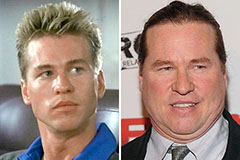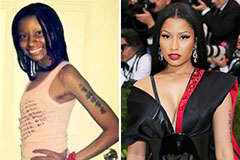The WWF Champion Belts hold a special and fabled location in the record of specialist fumbling. More than plain accessories, these tangible signs of victory represent the pinnacle of achievement, the end result of blood, sweat, and rips shed within the squared circle. For decades, the view of a wrestler hoisting a dazzling WWF (later copyright) champion belt above their head has been an famous picture, quickly recognizable also to those with just a passing experience with the sport. These belts are not simply prizes; they are physical manifestations of storylines, heritages, and the ever-evolving landscape of expert fumbling.
The background of WWF Championship Belts is as rich and dynamic as the business itself. From the very early days of the Globe Wide Wrestling Federation (WWWF) and its inaugural champion, the family tree of these titles informs a engaging story of fumbling's growth and improvement. The original WWWF Championship, held by the epic Friend Rogers, was a reasonably easy design, a unlike the sophisticated and frequently customized belts of today. Yet, it laid the structure for a tradition of symbolic hardware that would certainly concern define battling quality.
As the WWWF transitioned into the WWF under Vince McMahon Sr. and later his kid, Vince K. McMahon Jr., the champion belts developed in tandem with the company's blossoming popularity. The "Big Eagle" belt, associated with the Hulkamania era, became an promptly well-known symbol of wrestling's mainstream innovation in the 1980s. Its large, magnificent eagle layout, frequently draped over the wide shoulders of Hunk Hogan, epitomized the larger-than-life individualities and growing appeal of the time. This era sealed the champion belt as a crucial storytelling device, a graph of supremacy and the best prize that every wrestler aspired to attain.
The 1990s introduced a new age for the WWF, marked by a change in battling design and the emergence of new superstars. This period likewise saw the intro of new WWF Championship Belts, mirroring the changing aesthetic and the characters holding them. The "Winged Eagle" belt, with its even more intricate design including numerous plates and a prominent winged eagle, became the symbol of champions like Bret Hart, Shawn Michaels, and Stone Cold Steve Austin. This style is often considered among the most iconic and precious in battling history, standing for a golden era for the business and its top title.
The Perspective Period, a period of edgier storylines and rebellious characters, brought with it better evolution in the design of the WWF Championship Belts. While the "Winged Eagle" stayed for a while, the introduction of the " Smoking cigarettes Head" belt, particularly created for Stone Cold Steve Austin, marked a separation from practice. This special belt, featuring a skull with smoke originating from its eye outlets, highlighted the defiant and anti-establishment personality of one of fumbling's most significant stars. It demonstrated the business's readiness to customize the champion to fit the personality, additional improving the storytelling potential of the title.
The turn of the millennium and the ultimate rebranding of the WWF to copyright saw better models of the championship belts. The "Undisputed Champion" era, adhering to the acquisition of copyright, presented a brand-new style that unified the WWF and copyright World Heavyweight Championships. This belt, while initially representing a unification, at some point paved the way to the " Rewriter" belt, notoriously associated with John Cena. This debatable style, featuring a large copyright logo that can rotate, was both lauded and slammed for its showy and non-traditional look. No matter viewpoint, it became identified with Cena's dominant power and the era he specified.
Past the main globe champion, the WWF Championship Belts include a range of titles, each standing for a various degree of achievement and expertise within the company. The Intercontinental Championship, commonly taken into consideration the "workhorse" title, has a lengthy and prestigious history, held by several future globe champs. 1 Its various designs throughout the years have actually reflected its importance as a stepping rock to the main event. In a similar way, the United States Champion ( originally a copyright title brought over after the purchase), the Tag Group Championships (with their countless and often visually unique layouts standing for the unity of a group), the Women's Championships ( developing with different designs mirroring the expanding importance of women's wrestling), and the various "hardcore" and "European" titles ( however currently inoperative) all add to the rich tapestry of WWF/copyright champion background.
1.
The distinguished background of the Intercontinental Champion: copyright, Aug. 12, 2022.
www.youtube.com.
The design and building of WWF Champion Belts are substantial aspects of their allure. Usually crafted from steel plates ( generally zinc or brass) and leather straps, these belts are substantial signs of stature and workmanship. The detailed outlining on home plates, featuring business logo designs, eagles, globes, and various other symbolic images, contributes to their aesthetic wwf championship belts appeal and historical importance. The weight and feel of a championship belt are frequently explained by wrestlers as including in the feeling of accomplishment and legitimacy associated with holding it.
The legacy of WWF Champion Belts expands far past the wrestling ring. They have come to be cultural symbols, appearing in films, tv shows, and computer game. Replicas of these belts are highly searched for by fans, functioning as substantial pointers of their favored wrestlers and memorable eras. The image of a champion proudly displaying their belt is deeply deep-rooted in popular culture, representing victory and achievement in a broader feeling.
Finally, the WWF Champion Belts are much more than just attractive accessories. They are powerful icons of battling history, standing for the triumphs and tribulations of numerous athletes that have actually pursued greatness within the settled circle. From the simple layouts of the very early days to the sophisticated and tailored belts of the modern era, these titles have developed together with the business, showing its altering landscape and the larger-than-life characters who have actually held them. The legacy of these belts remains to withstand, captivating followers and solidifying their location as renowned icons of professional wrestling excellence.
 Bradley Pierce Then & Now!
Bradley Pierce Then & Now! Val Kilmer Then & Now!
Val Kilmer Then & Now! Robbie Rist Then & Now!
Robbie Rist Then & Now! Barbara Eden Then & Now!
Barbara Eden Then & Now! Nicki Minaj Then & Now!
Nicki Minaj Then & Now!